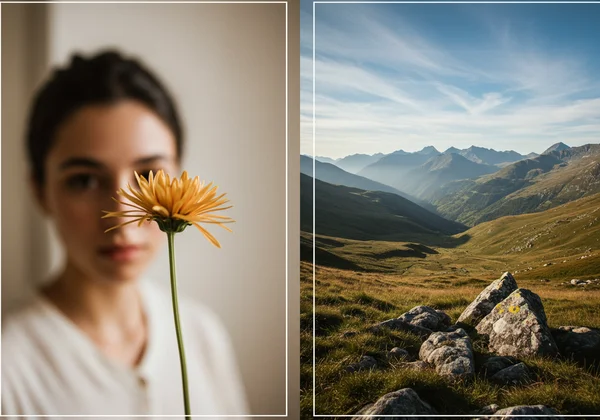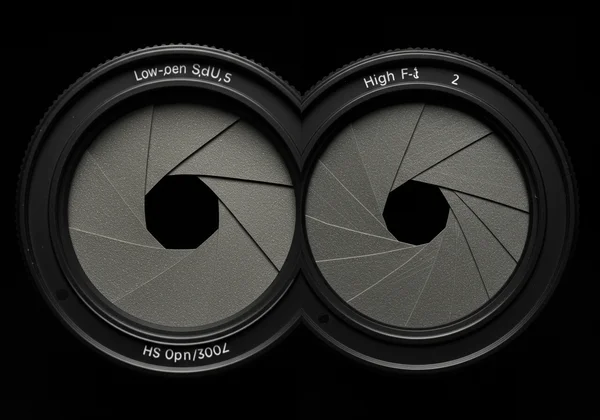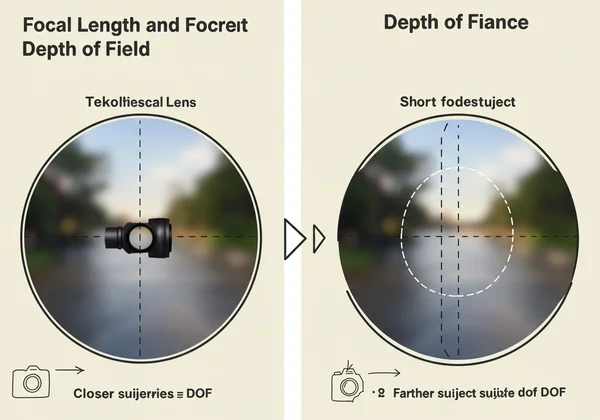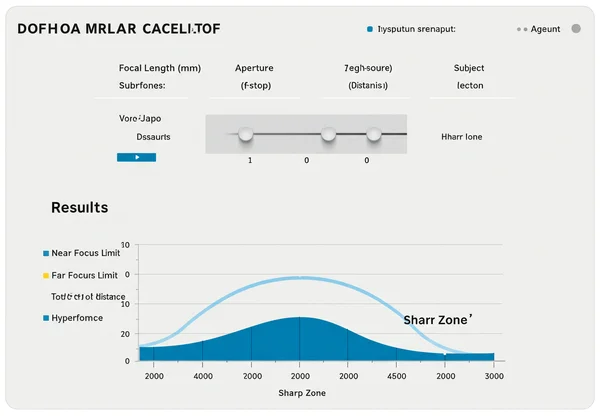Depth of Field Calculator: The Ultimate Photography Guide to Mastering DOF
Introduction: Unlocking Creative Control: What is Depth of Field in Photography?
Every stunning photograph, from a portrait with a beautifully blurred background to a majestic landscape that’s sharp from front to back, has one thing in common: intentional control over Depth of Field. For many aspiring photographers, this concept can feel complex and technical. But what if you could master it easily, transforming your creative vision into reality? What is depth of field in photography, and how can you harness it to elevate your images? This guide demystifies the principles of DOF and shows you how to pre-visualize your shots with precision using our intuitive DOF Calculator.
What Exactly is Depth of Field (DOF)?
At its simplest, Depth of Field (DOF) is the range of distance within a photograph that appears acceptably sharp. Think of it as a "zone of sharpness" that extends both in front of and behind your exact point of focus. Anything outside this zone will gradually fall out of focus, becoming progressively blurrier.
This is not an on-or-off switch; it’s a spectrum. A "shallow" or "small" depth of field means only a very narrow slice of your image is in focus, which is perfect for isolating a subject. Conversely, a "deep" or "large" depth of field keeps a much wider range sharp, ideal for capturing expansive scenes where every detail matters.

Understanding the "Sharp" Zone: Foregrounds, Backgrounds & Focus
Imagine you're taking a photo of a flower in a garden. You focus directly on the flower itself. The "sharp zone" might be so shallow that only the flower is crisp, while the leaves just behind it and the fence in the background are beautifully blurred. Alternatively, you could adjust your settings to create a deep DOF, where the flower, the leaves, and the distant fence all appear sharp and detailed. This control over the foregrounds, backgrounds, and focus is the essence of creative photography.
Why Mastering DOF is Crucial for Creative Photography
Understanding and controlling Depth of Field is one of the most powerful tools in a photographer's arsenal. It's how you guide the viewer's eye, create mood, and tell a compelling story.
- Isolate Your Subject: A shallow DOF makes your subject pop from the background, eliminating distractions. This is the secret behind professional-looking portraits with creamy, out-of-focus backgrounds (often called "bokeh").
- Convey a Sense of Place: A deep DOF allows you to capture an entire scene in sharp detail, from the rocks at your feet to the mountains on the horizon. This is fundamental for landscape, architectural, and travel photography.
- Build Atmosphere and Mood: The quality of the out-of-focus areas can contribute to the overall feeling of an image, whether it's dreamy and soft or vast and epic.
The Three Pillars: Core Factors Controlling Your DOF
Mastering DOF comes down to understanding the interplay of three key camera settings. These pillars work together to define the size and location of your sharp zone. By adjusting them, you gain complete creative control.
Aperture's Influence: From Blurry Backgrounds to Expansive Sharpness
Aperture is the opening in your lens that lets light in, measured in f-stops (e.g., f/1.8, f/4, f/11). It has the most direct and dramatic impact on your depth of field. The rule is simple, though slightly counterintuitive:
- Wide Aperture (Low f-stop number, e.g., f/1.4 - f/2.8): Lets in more light and creates a very shallow depth of field. This is your go-to for creating that blurry background effect in portraits.
- Narrow Aperture (High f-stop number, e.g., f/11 - f/22): Lets in less light and creates a very deep depth of field. This is perfect for landscapes where you want everything in focus.
Manipulating the aperture depth of field is the first step toward intentional image creation. You can easily see this effect in action with an interactive DOF simulator.

Focal Length's Role: How Lens Choice Shapes Your Depth of Field
The focal length of your lens (measured in millimeters, e.g., 24mm, 50mm, 200mm) also significantly affects the apparent depth of field. While the physics is complex, the practical outcome is straightforward:
- Longer Focal Lengths (Telephoto Lenses, e.g., 85mm and up): These lenses appear to compress the scene and produce a shallower depth of field. They are fantastic for making subjects stand out.
- Shorter Focal Lengths (Wide-Angle Lenses, e.g., 16-35mm): These lenses naturally produce a deeper depth of field, making them a popular lens choice for sweeping landscapes and architectural shots.
Focus Distance: Closer Subjects Mean Shallower Depth
The final pillar is the distance between your camera and your subject. This relationship is also simple to grasp:
- The closer you are to your subject, the shallower your depth of field will be.
This is why macro photography, where you are extremely close to a small subject, inherently has a razor-thin depth of field. Even at a narrow aperture like f/16, getting an entire insect in focus can be a challenge. Conversely, when you focus on something far away, the depth of field becomes much larger, often extending to infinity. To calculate depth of field accurately in these scenarios, a reliable tool is indispensable.

Leveraging Our DOF Calculator for Practical Understanding
Reading about these concepts is one thing, but seeing them in action is what truly builds intuition. Theory becomes practice with our powerful, real-time dof calculator. It’s designed not just to give you numbers, but to help you visualize the results before you even pick up your camera.
How to Use the DOF Calculator: Step-by-Step Walkthrough
Our tool is designed for speed and simplicity. In just a few seconds, you can plan your perfect shot:
- Select Your Camera: Choose your camera model from the dropdown list. This automatically sets the correct sensor size and Circle of Confusion for precise calculations.
- Enter Your Settings: Use the intuitive sliders or type in the values for your lens's Focal Length (mm), your desired Aperture (f-stop), and your Subject Distance.
- Analyze the Results: Instantly, the tool calculates everything you need: the near and far focus limits, the total depth of field, and even the hyperfocal distance—a critical value for landscape photographers.
Visualizing Your Depth: Seeing the "Sharp Zone" in Action
This is where our dof simulator truly shines. Below the numerical results, you’ll find a dynamic visualization chart. This graph shows you the exact "sharp zone" in relation to your focus point. As you adjust the sliders for aperture or focal length, you'll see this blue zone expand and contract in real-time. This interactive feedback bridges the gap between abstract numbers and tangible creative results, making it the perfect learning tool for visual learners and an essential planning resource for professionals.

Your Journey to Creative DOF Control Starts Now
Depth of field is the language of photography. It allows you to direct attention, create emotion, and transform a simple snapshot into a compelling story. By understanding the three pillars—aperture, focal length, and focus distance—you unlock a new level of creative freedom.
Don't leave your vision to chance. Stop guessing and start planning. Move beyond theory by putting these principles into practice today. Visit our homepage and use the try our free tool to see for yourself how easy it can be to master depth of field and take control of your photography.
Common Questions About Depth of Field
How does aperture truly affect depth of field?
Aperture directly controls the angle of light rays entering the lens. A wide aperture (low f-stop) allows light to enter from a wider range of angles, which results in a shallower depth of field. A narrow aperture restricts these angles, forcing light to travel in a more parallel path, which increases the depth of field and keeps more of the scene sharp.
Can I accurately calculate depth of field without a dedicated tool?
While you can use complex optical formulas to do it by hand, it's incredibly impractical, especially in the field. Older lenses often had DOF scales printed on them, but modern lenses rarely do. Using a dedicated digital tool like our hyperfocal distance calculator is infinitely faster, more accurate, and allows for real-time adjustments that make planning efficient.
Does my camera's sensor size impact depth of field?
Yes, it does. For the same field of view and f-stop, a camera with a larger sensor (e.g., Full-Frame) will produce a shallower depth of field than a camera with a smaller sensor (e.g., APS-C or Micro Four Thirds). This is why many portrait photographers prefer full-frame cameras for their ability to easily create subject separation. Our tool accounts for this by letting you select your specific camera model.
What is the "sweet spot" for lens aperture and sharpness?
Most lenses have a "sweet spot," an aperture setting (usually around f/5.6 to f/11) where they produce the sharpest possible image. While wide-open apertures (like f/1.8) give you a beautiful shallow DOF, they are often slightly less sharp. Extremely narrow apertures (like f/22) can actually reduce sharpness due to a phenomenon called diffraction. Using this powerful tool helps you balance the creative need for a specific DOF with the technical goal of maximum sharpness.
Why is understanding DOF crucial for creative photography?
Mastering DOF is what separates a deliberate photograph from a simple snapshot. It is your primary method for controlling what the viewer looks at and how they interpret the scene. Whether you want to blur out a distracting background to focus on a person's emotion or ensure an entire landscape is tack-sharp to convey its scale, you are using depth of field as a core storytelling element. It is the bridge between your technical settings and your artistic intent. Start mastering DOF today,